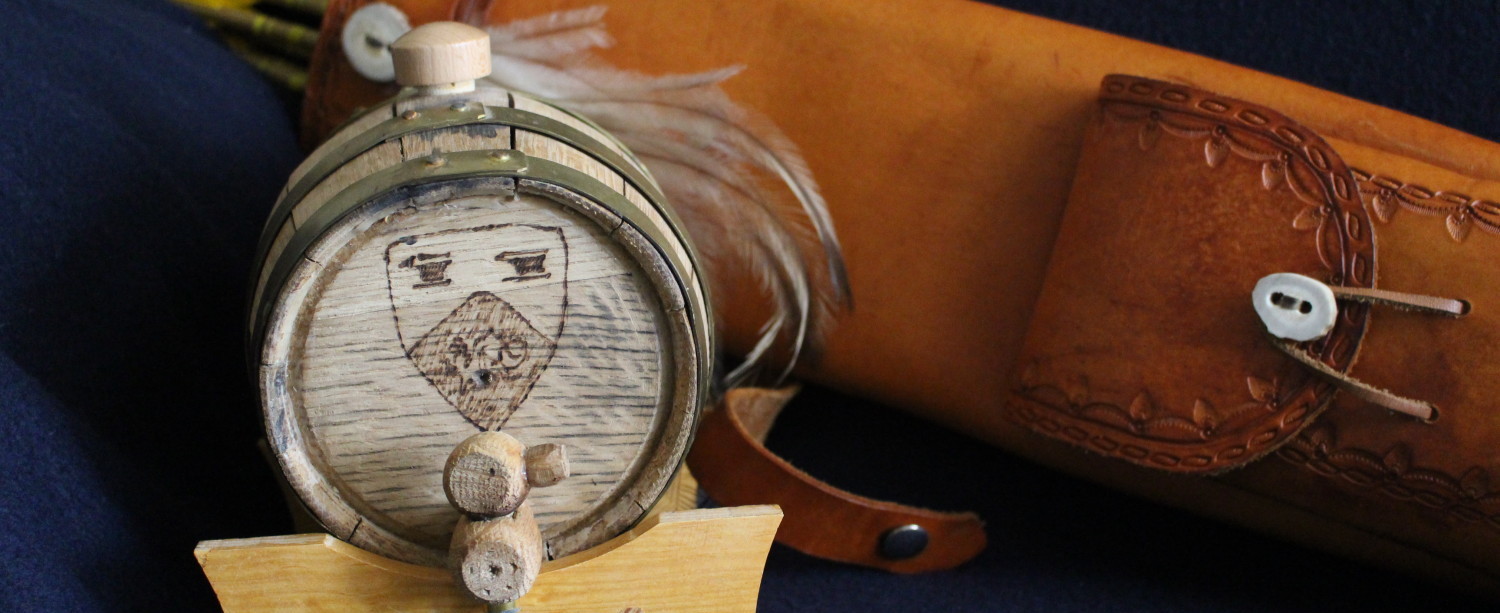Nocino – Part II
As I mentioned in my previous post (Nocino – Part I), tracking down extant references to nocino from “Period” is problematic. Most historic attributions seem to agree that the drink existed in the Middle Ages (possibly as far back as the Roman occupation of Britain). Just who “invented” the drink and where it came from is up for debate. A rather extensive Google search led me to origins and uses such as:
- It was brought back to Rome by soldiers returning from Britain who got it from the Picts
- It was initially made and consumed by Northern European Celtic groups
- It was brought to Italy by Druids from the Brittany area of France
- Italian monasteries used for its medicinal properties and also as an alcoholic treat
This is not an exhaustive list and as I mentioned earlier, there are no citations to Period documents.
What does not seem to be in dispute is the legend behind the appropriate time to collect the unripe walnuts for making nocino. Almost all historical accounts agree on this issue. That time was on or around the Feast of St John the Baptist (San Giovanni in Italy): June 24.
This date marked the end of celebrations of the summer solstice for many groups of people during the Middle Ages. Depending on who you reference, Christianity decided (yes, I know that is a bit anthropomorphic for a religion!) to make this a feast day to try to Christianize this pagan celebration. It fits nicely with the account in the gospel of St. Luke that John was born about 6 months before Jesus (June-ish if you accept the late December version of Jesus’ birth). Interestingly, this is one of the few celebrations for a saint’s birth rather than their death.
Anyway, if collected on the eve and/or the day of June 24, it was believed that herbs, nuts, and the like were imbued with special powers. These powers included medicinal effectiveness, which is probably one of the reasons why nocino purportedly has allopathic benefits.
An interesting issue arises concerning June 24 being the best time to collect unripe walnuts for making nocino. The walnuts need to be at a developmental stage at which they can be sliced into halves or quarters. If the nut shell has hardened, slicing can be problematic, maybe impossible. Climate will affect when the walnuts are at a stage that is right for slicing. So, while most accounts agree that June 24 is the best time for harvesting unripe walnuts, that may not be true in other climates. Apparently, in many areas of Europe the end of June works well. The walnuts I get from California arrive in late May.
Cristina Alamprese and Carlo Pompei at the University of Milan tested several variables related to the harvesting time of walnuts in a 2004 publication in Food Chemistry. One of the variables they tested was the amount of force needed to penetrate the hull and shell, which directly affects the “slice-ability” of the unripe nuts. Nuts were harvested and tested on June 13, June 24, and July 4. They found considerably more force was required to penetrate the July 4 sample compared to the other two samples. The difference was about on the order of 3 times more force being required when the earliest and latest dates were compared. That’s quite significant!
They also found that walnuts harvested later than June 24 had fewer characteristic components that are desirable in nocino as compared to those walnuts harvested earlier. They investigated the wonderful phenolics produced by unripe walnuts and their antioxidant properties. Maybe there IS something to this June 24 thing!
Alamprese and several colleagues published another article in 2005 that examined more of the chemical goodies in nocino. Fascinating stuff! This type of research makes up volumes of literature in the world of wine, but there is a paucity of similar research on nocino. The two articles mentioned are nearly the entire modern body of literature on the chemical characteristics of nocino. I’ll post citations in a future post
Now that I am deviating from my stated topic of this post, historical issues, I suppose that I should close. Maybe in a future post, I’ll review the modern scientific literature on nocino.
Coming up next: Nocino III, My take on making nocino.
Ciao!

Comments
Nocino – Part II — No Comments
HTML tags allowed in your comment: <a href="" title=""> <abbr title=""> <acronym title=""> <b> <blockquote cite=""> <cite> <code> <del datetime=""> <em> <i> <q cite=""> <s> <strike> <strong>